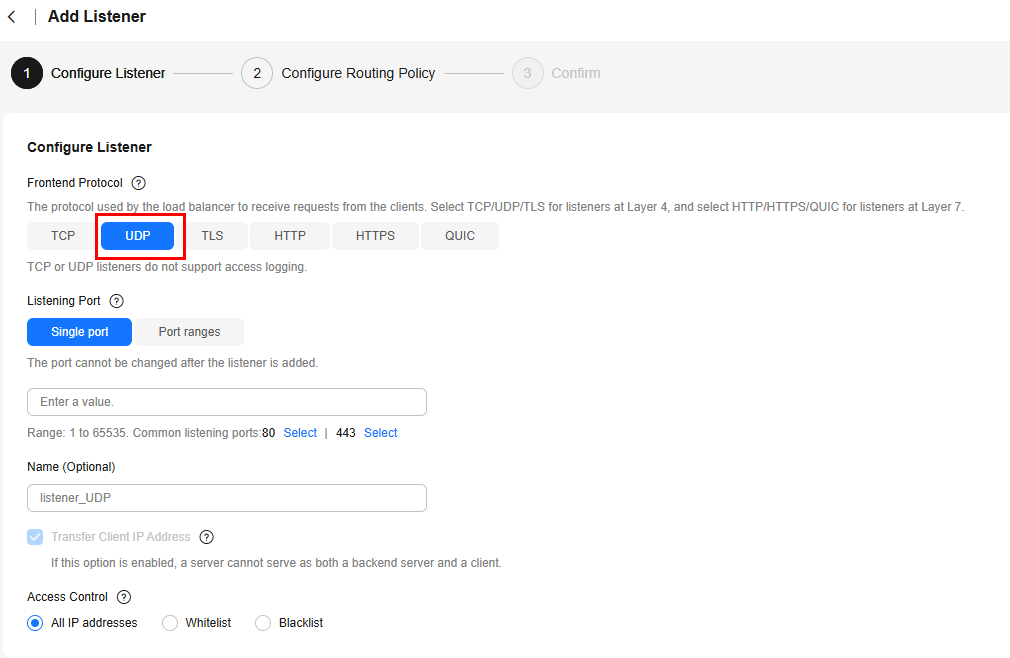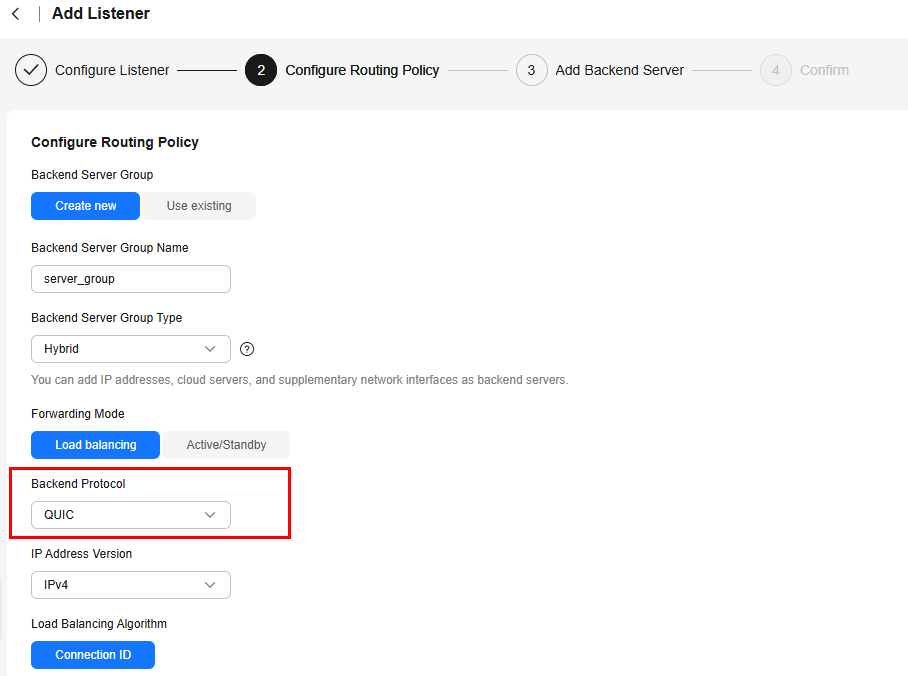Adding a UDP Listener (with a QUIC Backend Server Group Associated)
Scenarios
If you use UDP as the frontend protocol, you can select QUIC as the backend protocol, and select the connection ID algorithm to route requests with the same connection ID to the same backend server. QUIC is a great fit for the mobile Internet because it offers low latency, high reliability, and no head-of-line blocking (HOL blocking). Additionally, no new connections need to be established when you switch between a Wi-Fi network and mobile network.
Constraints
- You can add only UDP listeners if you want to use QUIC as the backend protocol.
- QUIC versions include Q043, Q046, and Q050.
- UDP listeners using QUIC as backend protocol do not support fragmentation.
Procedure
- Go to the load balancer list page.
- On the displayed page, locate the load balancer and click its name.
- On the Listeners tab, click Add Listener.
- In the Configure Listener step, set Frontend Protocol to UDP, configure other parameters as required, and click Next: Configure Request Routing Policy.
Figure 1 Selecting UDP as the frontend protocol

- In the Configure Routing Policy step, set Backend Protocol to QUIC and configure other parameters as required.
Figure 2 Selecting QUIC as the backend protocol

- Configure the parameters and click Submit.
Related Operations
After you add a listener, associate backend servers with the listener by performing the operations in Backend Server Overview.
Feedback
Was this page helpful?
Provide feedbackThank you very much for your feedback. We will continue working to improve the documentation.See the reply and handling status in My Cloud VOC.
For any further questions, feel free to contact us through the chatbot.
Chatbot





